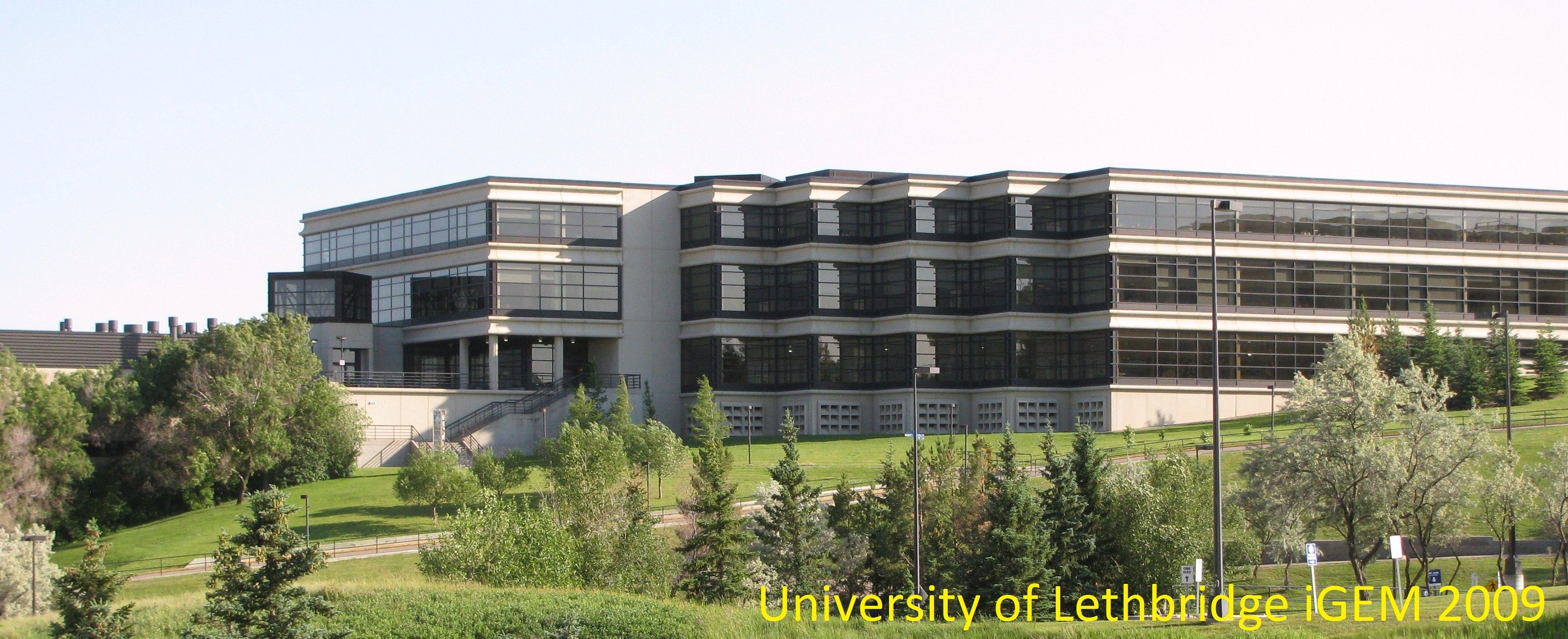Team:Lethbridge
From 2009.igem.org
(→Project Overview) |
(→Thank you to our sponsors) |
||
| Line 276: | Line 276: | ||
The BioBattery is based on using photosynthetic pathways to create energy. The self-sustaining battery will fix carbon dioxide from the atmosphere, provided that it is supplied with water and sunlight. However, simply using these photosynthetic pathways will not create a BioBattery efficient enough to be economically and environmentally applicable. Therefore, the creation of synthetic microcompartments is necessary to increase the energy output of the BioBattery. The microcompartments can contain the photosynthetic factors needed to maximize BioBattery efficiency. | The BioBattery is based on using photosynthetic pathways to create energy. The self-sustaining battery will fix carbon dioxide from the atmosphere, provided that it is supplied with water and sunlight. However, simply using these photosynthetic pathways will not create a BioBattery efficient enough to be economically and environmentally applicable. Therefore, the creation of synthetic microcompartments is necessary to increase the energy output of the BioBattery. The microcompartments can contain the photosynthetic factors needed to maximize BioBattery efficiency. | ||
| - | == | + | ==Our Sponsors== |
<html> | <html> | ||
Revision as of 03:01, 18 October 2009
- Home
- Team
- Project
- Ethics
- Notebook
- Meetings
- Modeling
- Parts
- Collaboration
- Judging
- Extra Information on SynBio

Project Overview
With increasing concerns surrounding the environment and rising energy costs, many are devoting more time to address the issues surrounding energy production. In the 2009 Canadian Federal Budget, one billion dollars was designated to develop sustainable energy projects. In keeping with this, the University of Lethbridge iGEM Team is working towards creating an efficient sustainable energy source, the BioBattery.
The BioBattery is based on using photosynthetic pathways to create energy. The self-sustaining battery will fix carbon dioxide from the atmosphere, provided that it is supplied with water and sunlight. However, simply using these photosynthetic pathways will not create a BioBattery efficient enough to be economically and environmentally applicable. Therefore, the creation of synthetic microcompartments is necessary to increase the energy output of the BioBattery. The microcompartments can contain the photosynthetic factors needed to maximize BioBattery efficiency.
Our Sponsors






 "
"
